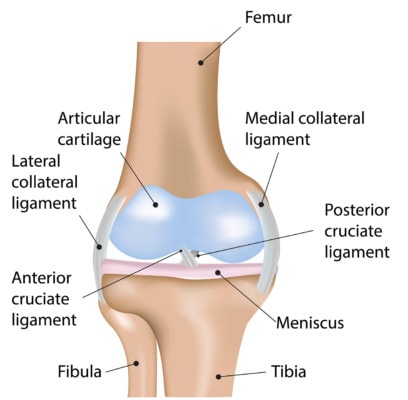Placing Cells with Accuracy: ACL Tightening without Surgery

Joshya/Shutterstock
This morning’s blog is another good example of how we approach cell therapy differently. We see many patients with loose ACL ligaments which have gone undetected. The reason the ACL hasn’t garnered attention is that it’s not loose enough to be replaced. However, the ACL ligament is often lax enough to cause problems in the knee joint. The ACL as you recall is the ligament that stabilizes the knee in a front-back direction. As discussed in our Orthopedics 2.0 book, lax ligaments lead to degenerated joints. The good news is that studies have shown that the ACL ligament can be tightened with injection. We’ve also demonstrated on MRI that injecting stem cells into the ACL can allow a better MRI appearance and decreased pain without the need for surgery. In addition, other studies have shown that complete surgical replacement of the ACL can lead to changes in biomechanics in the knee. The problem with injecting the ACL is that it can’t be accurately accessed blind in the office (without imaging guidance) because it’s buried deep in the knee. In addition, commonly used ultrasound imaging can’t see it well enough to make injecting it using musculoskeletal ultrasound practical. The only way it can be accurately injected is using a C-arm fluoroscope. The problem is that a C-arm costs as much as a small condo and as a result, most medical clinics that have ultrasound machines don’t have access to a C-arm. Since we’ve invested in this expensive equipment and have published on it’s use in regenerative orthopedics, we’ve spent years perfecting various techniques to accurately access the ACL ligament. The x-ray picture above is an image from one of those ACL injection techniques. In this image, the ACL is outlined by the dark radiographic contrast (in between the dashed lines), confirming that the medication is in fact in the ACL ligament. Once the needle is in the right spot, the ACL can be treated with medication to tighten the ligament, platelets, or stem cells. In summary, accurate placement of medications, platelets, or stem cells anywhere in the musculoskeletal system is the standard we set for ourselves. Injecting PRP or stem cells directly into a joint, blind in the office won’t do much when the knee is chronically unstable because the ACL ligament is lax. This is because any improvements in the condition of the cartilage or meniscus in the knee will soon be worn away by the extra joint movement allowed by the loose ligament. Hence we believe identifying specific lax ligaments in the knee and being able to access them accurately through a needle is a key part of helping patients avoid surgery.

If you have questions or comments about this blog post, please email us at [email protected]
NOTE: This blog post provides general information to help the reader better understand regenerative medicine, musculoskeletal health, and related subjects. All content provided in this blog, website, or any linked materials, including text, graphics, images, patient profiles, outcomes, and information, are not intended and should not be considered or used as a substitute for medical advice, diagnosis, or treatment. Please always consult with a professional and certified healthcare provider to discuss if a treatment is right for you.